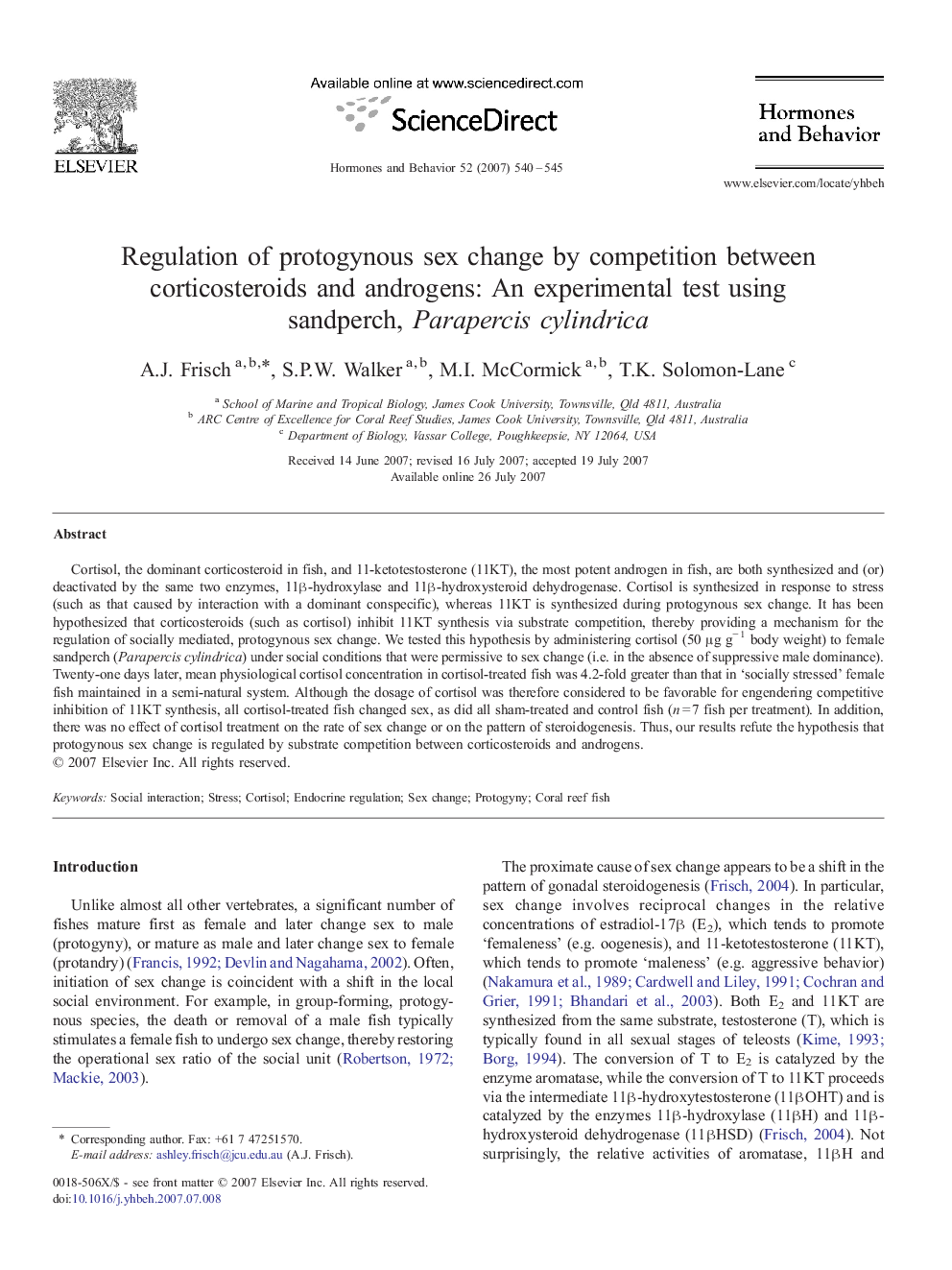| Article ID | Journal | Published Year | Pages | File Type |
|---|---|---|---|---|
| 322957 | Hormones and Behavior | 2007 | 6 Pages |
Cortisol, the dominant corticosteroid in fish, and 11-ketotestosterone (11KT), the most potent androgen in fish, are both synthesized and (or) deactivated by the same two enzymes, 11β-hydroxylase and 11β-hydroxysteroid dehydrogenase. Cortisol is synthesized in response to stress (such as that caused by interaction with a dominant conspecific), whereas 11KT is synthesized during protogynous sex change. It has been hypothesized that corticosteroids (such as cortisol) inhibit 11KT synthesis via substrate competition, thereby providing a mechanism for the regulation of socially mediated, protogynous sex change. We tested this hypothesis by administering cortisol (50 μg g− 1 body weight) to female sandperch (Parapercis cylindrica) under social conditions that were permissive to sex change (i.e. in the absence of suppressive male dominance). Twenty-one days later, mean physiological cortisol concentration in cortisol-treated fish was 4.2-fold greater than that in ‘socially stressed’ female fish maintained in a semi-natural system. Although the dosage of cortisol was therefore considered to be favorable for engendering competitive inhibition of 11KT synthesis, all cortisol-treated fish changed sex, as did all sham-treated and control fish (n = 7 fish per treatment). In addition, there was no effect of cortisol treatment on the rate of sex change or on the pattern of steroidogenesis. Thus, our results refute the hypothesis that protogynous sex change is regulated by substrate competition between corticosteroids and androgens.
